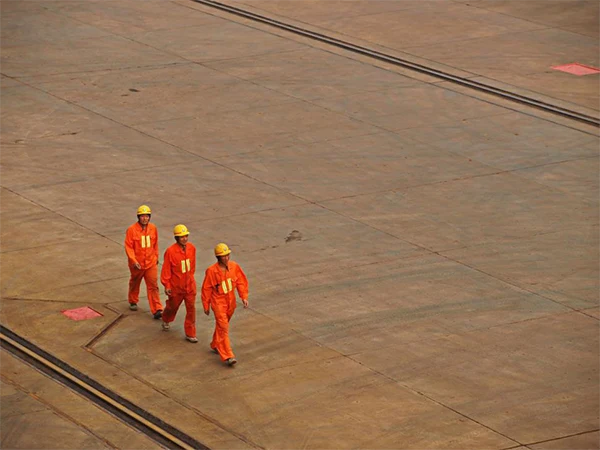Industrial workspaces can be called dangerous or hazardous environments, mainly when heavy machinery and toxic materials are involved. To counter this, industries install safety gates. It is one of the most simple and effective safety measures.
These safety gates provide an actual barrier between workers and equipment from accidental damage or injury. These safety gates also protect hazardous materials and prevent falls from raised-up areas.
In this article, we will look at 6 key benefits of safety gates in industrial workplaces.

1. Enhanced Worker Safety
The primary purpose of safety gates is to safeguard the workers from hazards. Therefore, safety gates are utilized as a physical barrier in industries where there are heavy machinery, high platforms, and dangerous materials. For example, on loading docks or elevated workplaces, safety gates prevent people from falling, which is one of the most common causes of injury in a workplace.
The safety gates prevent accidents caused by moving equipment like conveyor belts, automated machines, and forklifts. To ensure the safety of the industrial workplace, ErectaStep can provide reliable and durable safety gates that prevent accidents. Employers can place safety gates strategically in high-risk zones to reduce the possibility of accidents.
2. Prevents Unauthorized Access

One of the most important aspects of an industrial area is access. Not everyone is authorized to access every area. In that setting, safety gates prove to be a simple but effective solution. They prevent people from accessing restricted areas.
This is especially good for areas where sensitive materials are stored.
- Controlled Entry: Industries can combine safety gates to access control systems to regulate who can enter parts of the industrial complex.
- Set Clear Boundaries: Gates can also act as a visual deterrent. Having safety gates also makes it clear for people where a restricted area begins.
Using controlled entry through safety gates can also help maintain order and reduce the risk of injury for both employees and employers. You should also know that many gates also come with lockable features.
3. Improved Traffic Control in Workspaces
We all know that all industrial workspaces often have a lot of moving parts including people, equipment, and vehicles. By using safety gates, industries can regulate traffic flow. It helps in directing both personnel and equipment in a safe way. These gates can also be used to designate specific paths for workers and vehicles.
- It helps in dividing people and vehicles. Also reducing the risk of accidents.
- The best part is that it helps in managing the flow of people and vehicles. So, overcrowding does not arise.
- It also ensures that heavy machinery operates away from the pedestrian areas.
If there are clear pathways marked with the help of safety gates, everyone will know where they are supposed to be. Traffic control of this kind is especially useful in big warehouses.
4. Protects from Falling Hazards
Most industrial workspaces have elevated platforms where they store materials. One of the most dangerous hazards of industries is the risk of falling. The safety gates are there to protect people from this type of hazard.
- These gates act as physical barriers and protect people from accidental slips or trips that may result in falls.
- Self-closing safety gates can be installed at ladder entry points or loading areas to prevent access to dangerous ledges.
Did You Know?
The fatal work injury rate was 3.7 fatalities per 100,000 full-time equivalent (FTE) workers, up from 3.6 per 100,000 FTE in 2021. In 2022, employers reported 2.8 million injury and illness cases in private industry, up 7.5 percent from 2021.IIF Home : U.S. Bureau of Labor Statistics
5. Cost Savings Through Accident Prevention
Industries are responsible for the safety of their workers and they need to compensate for the injuries occurred in workplaces. By preventing accidents from happening, industries can avoid significant financial implications like compensation claims and lost productivity.
Industries can invest in safety gates and reduce the likelihood of accidents from happening. The approach of installation of gates reduces the potential for expensive legal battles and fines associated with non-compliance with safety regulations.
6. Compliance with Workplace Safety Regulations
Occupational Safety and Health Administration (OSHA) regulates the safety of industrial workspaces. Safety gates are an important component of these regulations. These types of agencies set specific guidelines for fall protection, machine guarding, and safe access points.
Industries should also regularly inspect the safety gates and ensure that they are functional and compliant with the latest safety standards. By complying with these regulations, industries can avoid penalties or sanctions.

Wrapping Up
If an industry wants to maintain a safe and secure workspace environment, then they need to invest heavily in safety gates. These gates can enhance worker safety and ensure compliance. Along with these, they also offer many benefits which we’ve detailed in this article.
Safety gates also help businesses protect their most valuable assets – employees. By opting for safety, industries can save lives and also reduce long-term operational costs.
Hope this article helps you understand the key benefits of safety gates in industrial workspaces.






